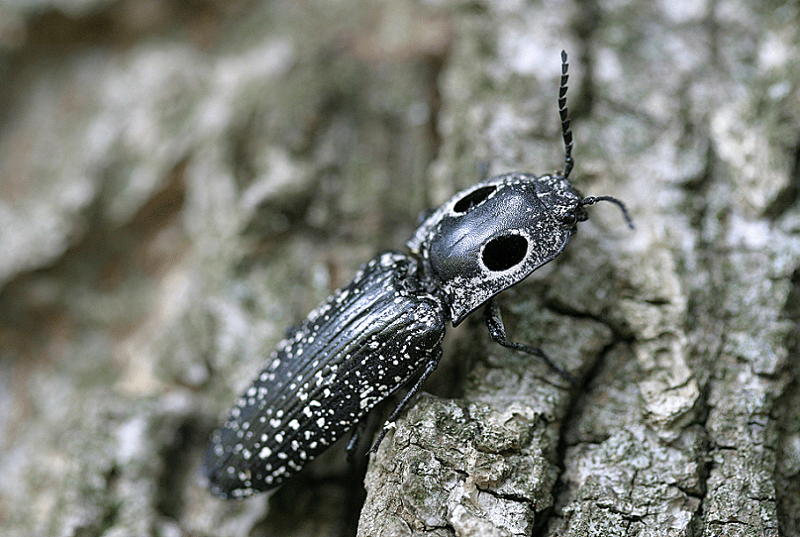Click Beetle Facts
- Perhaps most notably of all, the term Click Beetle serves as the common name for any insect in the Family of Elateridae. There also appear to be about 7,000 known species within this family. These remarkable insects evolved and live on every continent except Antarctica.
- Furthermore, the common name of the numerous species in the group derives from a rather obvious source. That’s the unique and surprising sound individuals generate. Nature provided these animals with a method of producing a sound that closely resembles a clicking noise.
- The quite fascinating Click Beetle makes its namesake noise through a conscious act of movement. In fact, the insect does this by violently snapping its spine into a specially evolved notch on its mesosternum.
- Also, the distinctive small invertebrate principally uses this clicking sound to stave off attacks from potential predators. However, the action also gives the insect the ability to flip into the air, if it finds itself on its back. This provides it with an advantage over many related species.
Related Articles
Click Beetle Physical Description
Firstly, given the incredible number of species in its Family, physical appearances among the different varieties of Click Beetle vary significantly. Secondly, however, general similarities between the various members of the enormous still remain.
In fact, only a relative a few members of this remarkable Family display bright colors. In addition to this, a few types grow to a relatively large size. However, most varieties throughout the world attain a measurement of less than 0.8 in (2 cm) in length. Also, some display sexual dimorphism, while others do not.
Further, and quite amazingly, the variety of Nature led to a few others actually evolving to be bioluminescent. But, the color patterns of most members of this truly impressive Family of invertebrates consist of various dull shades of black or brown.
- Kingdom: Animalia
- Phylum: Arthropoda
- Class: Insecta
- Order: Coleoptera
- Family: Elateridae
Click Beetle Distribution, Habitat, and Ecology
Possessing an almost global distribution, various forms of Click Beetle exist on all continents, except Antarctica. Not only that, but nearly 1,000 varieties appear in North America alone, especially scattered throughout portions of the United States.
The fascinating creature also evolved to be quite adaptable. As a result, it thrives in a wide variety of climates and habitats. These include both temperate and tropical. However, the majority of species exist in temperate climates, especially in forests.
An adult Click Beetle remains primarily nocturnal in nature. In this, it follows a common pattern among similar insects. The majority of forms of this arthropod typically feed at night. In all portions of its range, it consumes a wide variety of local plant life.
But, the larvae usually feed on various inert organic matter. In some instances, and among some species, the larvae constitute a concern for crops. These larvae normally spend 3-4 years beneath the soil before emerging as adults, often damaging the crops of farmers.
Species Sharing Its Range
Check out our other articles on 8 Truly Monumental Orchids, Elephant Beetle, Borra Caves, Texas Horned Lizard, Spotted Handfish, Wood Frog, Polar Bear, Araripe Manakin, Socotra Dragon Tree

